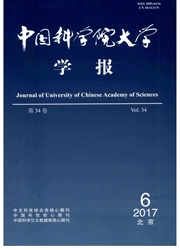

 中文摘要:
中文摘要:
能源足迹测度是揭示能源消费对区域环境及可持续发展压力的重要方法.利用能源足迹计量模型、GM(1,1)模型、指数预测模型及STIRPAT模型,分析1990年以来长三角地区能源足迹相关要素的动态变化及驱动因子.研究发现:1)从人均能源足迹增率来看,长三角地区年均增长率为7.70%,增长速高于全国和上海而低于江苏和浙江省;从人均能源足迹值来看,长三角地区低于上海市,但高于全国和江苏,与浙江省并无明显高低关系特征.2)长三角地区能源足迹产值年均增长8.42%,能源足迹强度年均减少8.37%,全国和江浙沪省市变化趋势与长三角地区大体一致,但程度有所不同;长三角地区及江浙沪3省市能源产值和强度变化主要通过产业转移和升级来实现,而国家则是依靠政策推动和技术发展革新实现.3)通过预测,2015—2020年长三角地区人均能源足迹和能源足迹产值将会持续增长,而能源足迹强度显示下降态势,表现出良好的发展趋势.4)人口规模、人均GDP、二产比重及单位工业增加值能耗对能源足迹均有影响,弹性系数分别为0.596、0.073、0.18和-0.123.
 英文摘要:
英文摘要:
Energy ecological footprint method is a new and important approach for evaluating regional sustainable development. We use energy ecological footprint model,GM( 1,1) model,index prediction model,and STIRPAT model to analyze energy footprint in Yangtze River Delta region from 1990 to 2012. The results are given below. 1) The annual growth rate of EEF had reached 7. 70% in the past 23 years,and the national energy footprint per capita was less than those of Yangtze River Delta region and the three provinces. As the change rates,the fastest-growing segment was the provincial zone,and the nation was low. 2) VEF appeared the growth trend while EFI showed the decreased trend,and the annual rates were 8. 42% and 8. 37%,respectively.Yangtze River Delta region and the three provinces were mainly implemented by industrial transformation and upgrade, the nation mainly relied on policy development and technical innovation. 3) EEF and VEF would continue to grow in Yangtze River Delta region but EEI would decline,which shows the harmonious trends. 4) Population,GDP per capita,industrial structure,and technology had great impacts on EEF,and the corresponding coefficients were 0. 596,0. 073,0. 18,and- 0. 123,respectively.
 同期刊论文项目
同期刊论文项目
 同项目期刊论文
同项目期刊论文
 期刊信息
期刊信息
